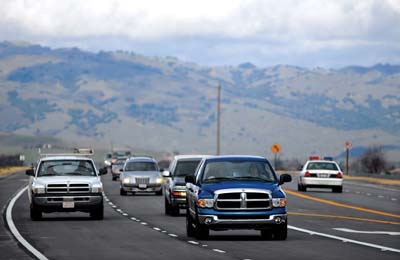Local agriculture is an important element of San Benito County’s economy, but its impact is dwarfed by government employment and especially the inflow of out-of-county earnings; yet we know very little detail about that critical sector.
San Benito County’s 2012 in-county total farm earnings were $102 million, which was $1,793 (4.7 percent) of the county’s $38,020 per-capita income.
In-county earnings from government and government enterprises (93 percent consisting of state and local level) exceeded $225 million, or $3,698 (9.7 percent) of the total per capita income. Meanwhile, the 2012 net flow of earnings from out of the county was $599 million and accounted for $10,530 per capita, almost 28 percent of the county’s earned income.
Twenty-eight percent of per capita income from out of county earnings is easily the highest proportion in the area. Santa Cruz was 20.5 percent, Merced 5.9 percent and Monterey 1.5 percent. Both Fresno and Santa Clara Counties had negative numbers because they exported more earnings than they imported.
The government calculated the net flow by deducting the county outflow ($234 million) from the county inflow ($833 million); so our proprietors and commuters actually brought in a whopping $833 million in earnings in a single year.
There are significant crossover effects that cannot be calculated. A commuter may purchase gasoline locally, in fact service stations are Hollister’s largest sales tax generator by sector. Those sales taxes can then be used to fund a government position or an agriculture crop may leave the county and result in a food processing or transportation job for one of our commuters somewhere else; so I am dealing only with the primary effects.
Unfortunately, we know very little detail about this overwhelming economic force; where do they work, how far and how often do they commute, what are their means of transportation, what do they do, what skills do they have, and what do they earn? The gross numbers are not very useful for detailed economic development.
One key data set would be information about those working for out-of-county governments or public agencies. San Benito County might be able to lure a manufacturing facility from San Jose, but there is no chance of luring their police department, tax collector, or transportation agency.
Like it or not, with almost 50 percent of our jobs on the commute, we are the classic bedroom community with the problems that plague most bedroom communities – insufficient community loyalty and local economic activity to support progress.
In the six-county geographic region, approximately 65 percent of earnings consists of wages and salaries; the remaining 35 percent are benefits. Assuming inflow earnings follow that general formula, the proprietors and commuters have $389 million of pre-tax profits, wages and salaries. To get them to spend locally we have to supply what they need and want and doing that requires some work and investment. It’s potential business we just cannot afford to abandon.
We also have the usual racial and economic divides, but we also have special rural-city, geographic and workplace divides. A detailed analysis of our population and their employment and commute information may show that we are trying to do the impossible rather that coming to grips with our basic problems.
As long as the commuters have little social and economic interface with the county and city in which they live, local government will return the favor in kind.
64.3
F
Hollister
May 18, 2024








